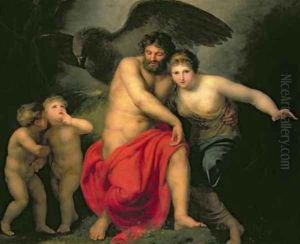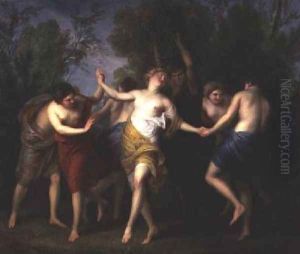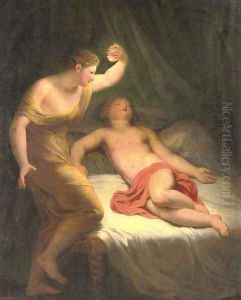Andreas or Andries Lens Paintings
Andreas or Andries Lens was a Flemish painter, draughtsman, and art theorist who played a significant role in the development of Neoclassical painting in Belgium. He was born on March 31, 1739, in Antwerp, then part of the Habsburg Netherlands. Lens was one of the early advocates of Neoclassicism in the Southern Netherlands, a style which sought to revive the ideals of classical art and was characterized by an emphasis on simplicity, symmetry, and a clarity of form reminiscent of the art of ancient Greece and Rome.
Lens initially trained under the history painter Hendrik-Jozef Antonissen in Antwerp before moving to Paris to continue his studies. His time in Paris exposed him to the prevailing Neoclassical ideals, which were gaining momentum under the influence of artists like Jacques-Louis David. After his stay in Paris, he returned to Antwerp, where he worked as a history painter, creating works that exhibit his commitment to Neoclassicism. His paintings often featured mythological or historical subjects, portrayed with an emphasis on idealized beauty and purity of form.
Despite his contributions to painting, Lens is also remembered for his theoretical work on art. In 1769, he published an influential treatise, 'L'art de peindre,' which outlined his ideas on painting and aesthetics. This work not only reflected the Neoclassical ideals that he espoused but also contributed to the spread and acceptance of these ideas among artists and intellectuals in the Low Countries.
In the latter part of his career, Lens became a professor at the Academy of Fine Arts in Antwerp. His role as an educator allowed him to disseminate his Neoclassical principles to a new generation of artists. Throughout his life, Lens was not only dedicated to the practical aspects of creating art but also to the intellectual endeavour of understanding and teaching the principles that underpin artistic creation.
Andries Lens died on March 30, 1822, in Antwerp, leaving behind a legacy as an artist who helped to shape the course of Belgian painting at a time of significant stylistic change. His commitment to Neoclassicism, both in his artistic practice and his theoretical writings, marked a departure from the Baroque and Rococo styles that had previously dominated Flemish art, ushering in a new era of artistic expression grounded in classical antiquity.


